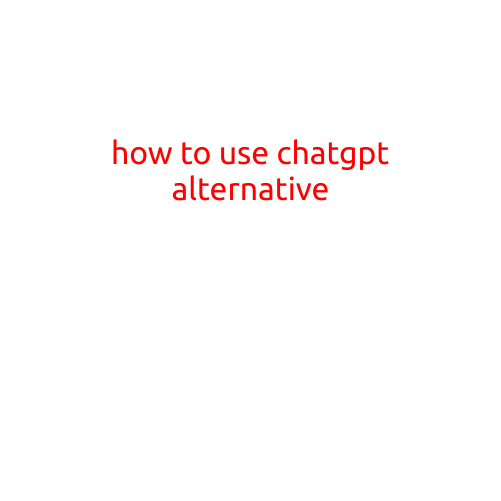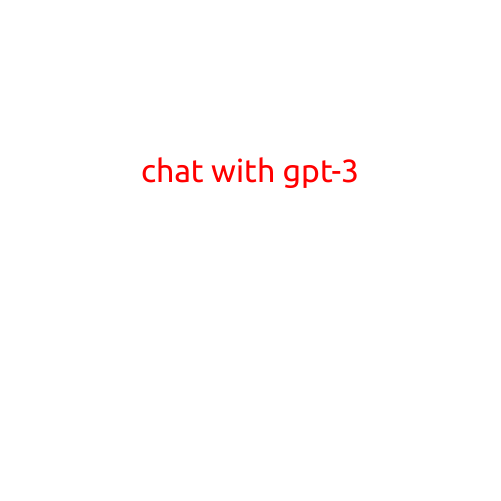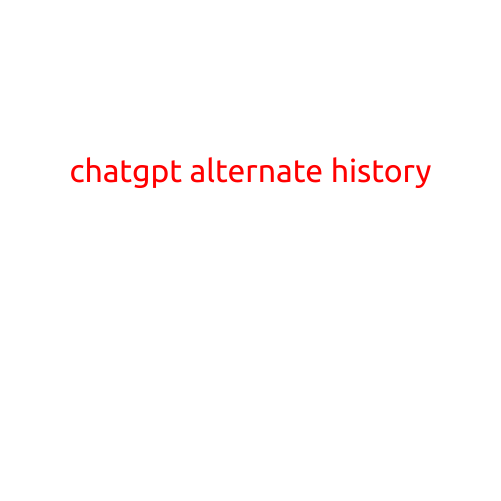
How to Use ChatGPT Alternative: A Comprehensive Guide
The rise of ChatGPT has left many users wondering if there are other alternatives that can provide similar advanced language processing capabilities. Fortunately, there are several ChatGPT alternatives that offer similar features and functionality, albeit with some differences. In this article, we’ll explore the best ChatGPT alternatives and provide a comprehensive guide on how to use them.
What are ChatGPT Alternatives?
ChatGPT alternatives are language models that have been trained on vast amounts of text data and can understand, generate, and respond to human language in a conversational manner. These models are designed to mimic human-like conversations, providing users with a more personalized and engaging experience.
Top ChatGPT Alternatives
Here are some of the top ChatGPT alternatives:
- Language Model of OpenAI: Developed by OpenAI, this model is also known as the “DALL-E” model, named after the famous art piece by Salvador Dalí. This model is capable of generating text, images, and also has the ability to perform tasks such as language translation and summarization.
- Google’s LaMDA: LaMDA (Large Language Model Dialogue Applications) is a conversational AI model developed by Google. This model is designed to have a more natural and conversational dialogue style, making it feel more human-like than other language models.
- Microsoft’s Turing-NLG: The Turing-NLG model is a deep neural network language model developed by Microsoft. This model is designed to understand and generate text, and is capable of performing tasks such as language translation, text summarization, and question answering.
How to Use ChatGPT Alternatives
Using ChatGPT alternatives is relatively straightforward, and here’s a step-by-step guide to get you started:
- Choose an Alternative: Select one of the top ChatGPT alternatives listed above.
- Understand the Interface: Familiarize yourself with the user interface of the chosen alternative. Each model has its own unique interface, so take some time to explore and understand how to use it.
- Enter Your Query: Enter a question, topic, or prompt to generate text, and the model will respond accordingly.
- Customize Your Output: Many alternatives allow you to customize your output, such as adjusting the tone, style, and length of the generated text.
- Explore Advanced Features: Most alternatives offer advanced features, such as language translation, text summarization, and more. Experiment with these features to get the most out of your experience.
Tips and Tricks
Here are some tips and tricks to help you get the most out of your ChatGPT alternative experience:
- Keep it Simple: Keep your queries simple and concise to get better results.
- Use Domain-Specific Language: Use domain-specific language when generating text to get more accurate results.
- Experiment with Parameters: Experiment with different parameters, such as tone and style, to customize your output.
- Use Multiple Alternatives: Consider using multiple ChatGPT alternatives to get different perspectives and insights.
- Join Communities: Join online communities and forums to learn from other users and get tips on how to use your ChatGPT alternative more effectively.
Conclusion
ChatGPT alternatives offer a new world of possibilities for language processing and communication. By exploring the top alternatives and following the tips and tricks outlined in this article, you’ll be well on your way to unlocking the full potential of these advanced language models. Whether you’re a developer, researcher, or simply a curious user, ChatGPT alternatives are an exciting new frontier in AI development.





